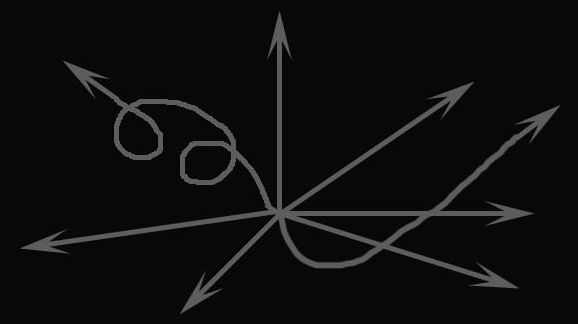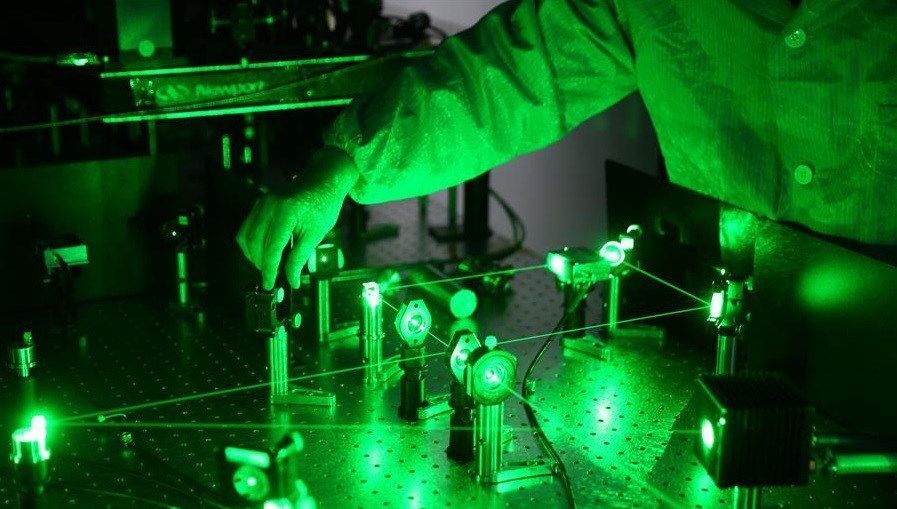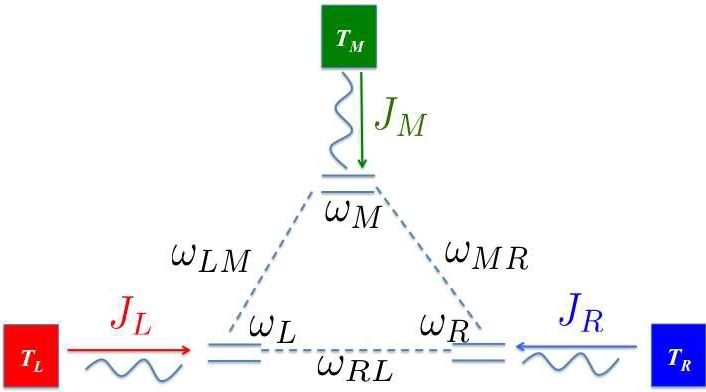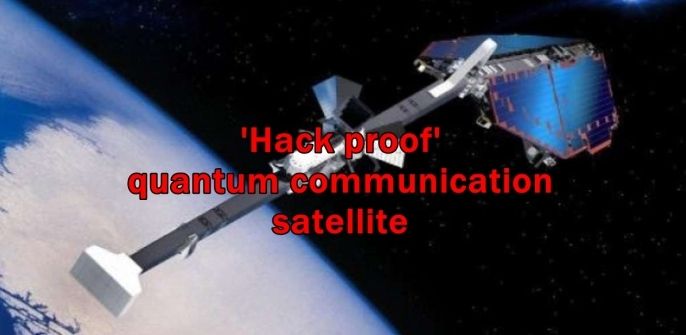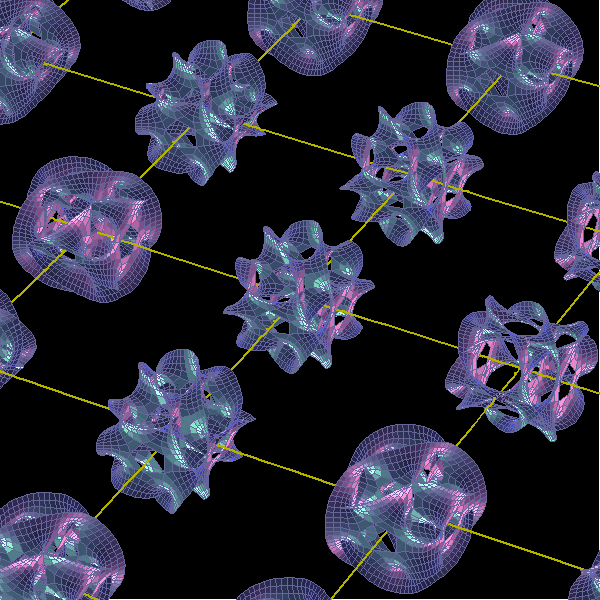Archive for the ‘quantum physics’ category: Page 803
Jun 1, 2016
Solid-state physics: Probing the geometry of energy bands
Posted by Karen Hurst in categories: computing, mobile phones, particle physics, quantum physics
Scientists at Ludwig-Maximilians-Universitaet (LMU) in Munich and the Max Planck Institute for Quantum Optics (MPQ) have devised a new interferometer to probe the geometry of band structures.
The geometry and topology of electronic states in solids play a central role in a wide range of modern condensed-matter systems, including graphene and topological insulators. However, experimentally accessing this information has proven to be challenging, especially when the bands are not well isolated from one another. As reported by Tracy Li et al. in last week’s issue of Science (Science, May 27, 2016, DOI: 10.1126/science.aad5812), an international team of researchers led by Professor Immanuel Bloch and Dr. Ulrich Schneider at LMU Munich and the Max Planck Institute of Quantum Optics has devised a straightforward method with which to probe band geometry using ultracold atoms in an optical lattice. Their method, which combines the controlled transport of atoms through the energy bands with atom interferometry, is an important step in the endeavor to investigate geometric and topological phenomena in synthetic band structures.
A wide array of fundamental issues in condensed-matter physics, such as why some materials are insulators while others are metals, can be understood simply by examining the energies of the material’s constituent electrons. Indeed, band theory, which describes these electron energies, was one of the earliest triumphs of quantum mechanics, and has driven many of the technological advances of our time, from the computer chips in our laptops to the liquid-crystal displays on our smartphones. We now know, however, that traditional band theory is incomplete.
May 31, 2016
Gravitational waves may reveal stringy Universe
Posted by Andreas Matt in category: quantum physics
May 31, 2016
China’s Quantum Satellite Next Month to Make China Communications Difficult to Crack
Posted by Karen Hurst in categories: quantum physics, satellites, security
As the world is wary about cyber hackers in China, the next big thing for it is launching an experimental quantum communication satellite in July that was designed by the Chinese Academy of Sciences (CAS), making it first of its kind.
Since quantum communications assure the highest level of security being hard to replicate or separate. Nor can it be reverse engineered as it involves a complex process employing quantum entanglement. Once it is successful, China can be sure that no one can crack into its security networks, making it impossible for any world power to snoop around.
Developed over the last five years, the quantum satellite will be launched from the Jiuquan Satellite Launch Center with four ground stations to track and facilitate communication. Moreover, it will have one space quantum teleportation experiment station, said a report prepared by CAS.
May 31, 2016
Are black holes HOLOGRAMS?
Posted by Karen Hurst in categories: cosmology, quantum physics

Black Holes possibly be Holograms?
Researchers at the Max Planck Institute for Theoretical Physics in Munich, Germany, have used quantum gravity to estimate the chaotic structure that may exist within black holes.
May 31, 2016
Quantum thermal transistor can control heat currents
Posted by Karen Hurst in categories: computing, quantum physics
(Phys.org)—Researchers have designed a quantum thermal transistor that can control heat currents, in analogy to the way in which an electronic transistor controls electric current. The thermal transistor could be used in applications that recycle waste heat that has been harvested from power stations and other energy systems. Currently, there are methods for transporting and guiding this heat, but not for controlling, amplifying, and switching the heat on and off, as the quantum thermal transistor can do.
The researchers, Karl Joulain et al., at the University of Poitiers and CNRS in France, have published a paper on the quantum thermal transistor in a recent issue of Physical Review Letters.
“To manage electricity, one uses electronic diodes, transistor and amplifiers,” Joulain told Phys.org. “We would like to do the same thing with thermal currents. We would like to make logical thermal circuits in the same way electronic thermal circuits have been designed. In this way, wasted heat could be guided, switched on or off, amplified or modulated.”
May 30, 2016
Engineering nanodevices to store information the quantum way
Posted by Karen Hurst in categories: computing, engineering, particle physics, quantum physics
Wonderful! We’re well on our way of making QC more available on many devices in the near future.
Creating quantum computers which some people believe will be the next generation of computers, with the ability to outperform machines based on conventional technology—depends upon harnessing the principles of quantum mechanics, or the physics that governs the behavior of particles at the subatomic scale. Entanglement—a concept that Albert Einstein once called “spooky action at a distance”—is integral to quantum computing, as it allows two physically separated particles to store and exchange information.
Stevan Nadj-Perge, assistant professor of applied physics and materials science, is interested in creating a device that could harness the power of entangled particles within a usable technology. However, one barrier to the development of quantum computing is decoherence, or the tendency of outside noise to destroy the quantum properties of a quantum computing device and ruin its ability to store information.
Continue reading “Engineering nanodevices to store information the quantum way” »
May 30, 2016
China is readying to launch its first ‘hack proof’ quantum communication satellite
Posted by Karen Hurst in categories: cybercrime/malcode, quantum physics
Personally, if this doesn’t spook you then I have to question your sanity.
Quantum communication and quantum teleportation are two technologies ancient India invented and mastered. It saddens me to see the Chinese stealing a march in these fields. India must formulate a response by studying Vedic texts to rediscovered the blueprints to these advanced technologies. I’m confident that under Modi-ji’s brilliant leadership, India will quickly surpass China and America in the field of quantum teleportation and quantum communication by 2020!
http://www.techworm.net/2016/05/china-ready-launch-first-hac…llite.html
May 29, 2016
Understanding A 10 Dimensional Universe
Posted by Shailesh Prasad in categories: cosmology, particle physics, quantum physics
When someone mentions “different dimensions,” we tend to think of things like parallel universes — alternate realities that exist parallel to our own, but where things work or happened differently. However, the reality of dimensions and how they play a role in the ordering of our Universe is really quite different from this popular characterization.
To break it down, dimensions are simply the different facets of what we perceive to be reality. We are immediately aware of the three dimensions that surround us on a daily basis – those that define the length, width, and depth of all objects in our universes (the x, y, and z axes, respectively).
Beyond these three visible dimensions, scientists believe that there may be many more. In fact, the theoretical framework of Superstring Theory posits that the universe exists in ten different dimensions. These different aspects are what govern the universe, the fundamental forces of nature, and all the elementary particles contained within.
May 28, 2016
Singer Simonne Jones Fuses Pop Music and Quantum Physics
Posted by Karen Hurst in categories: media & arts, quantum physics
What I have come to appreciate with scientists and engineers is our diversity of interests and talents. And, this is definitely another case that proves that.
We talked to the artist about her debut album with songs called “Spooky Action” and “Gravity”.


